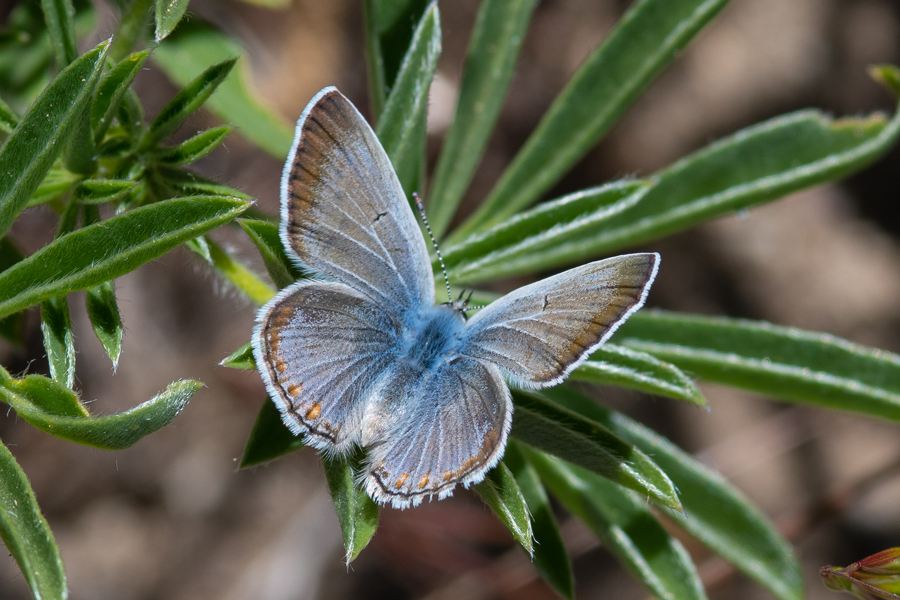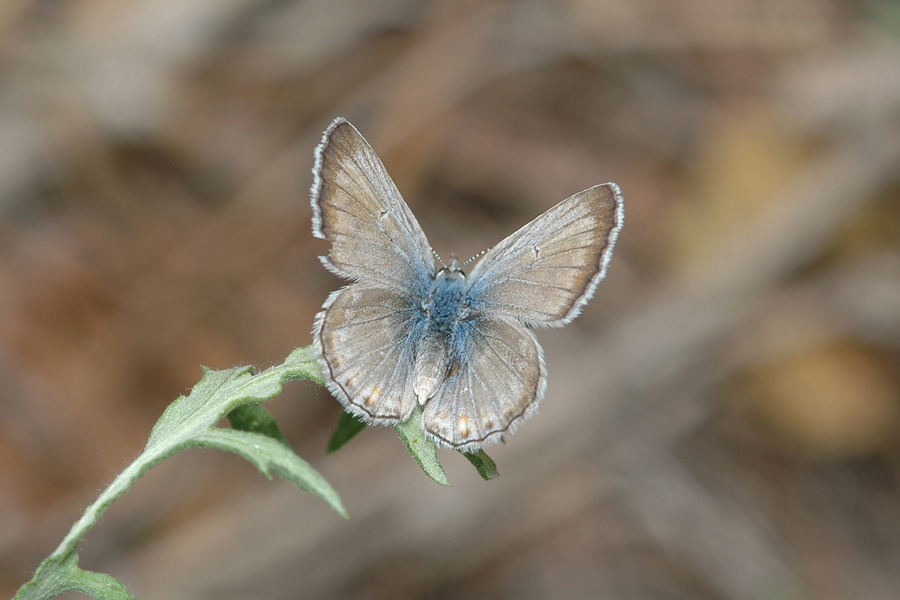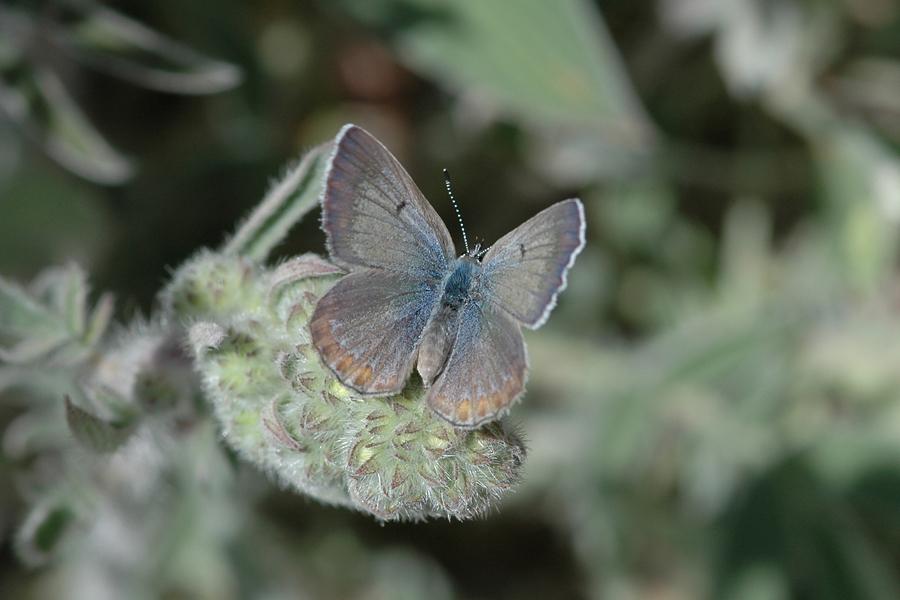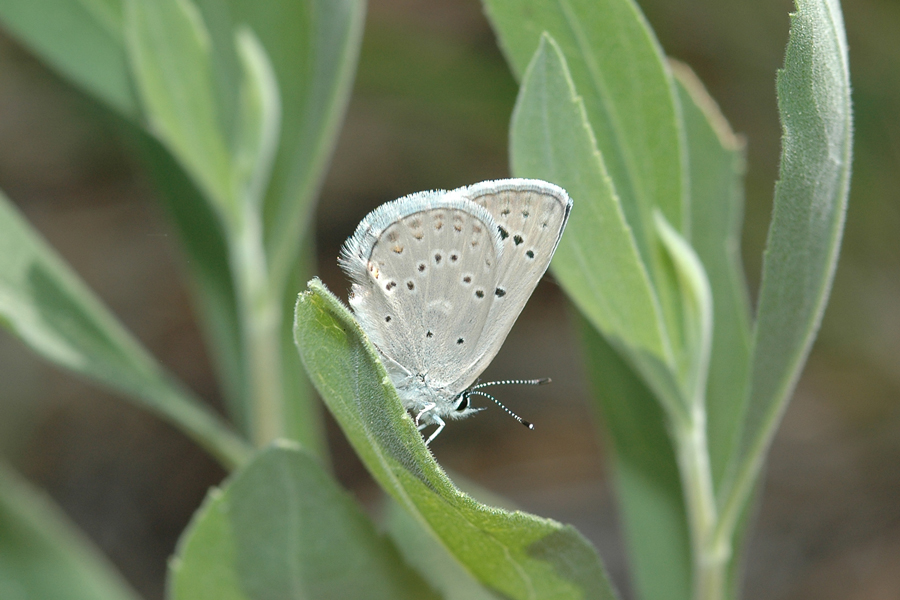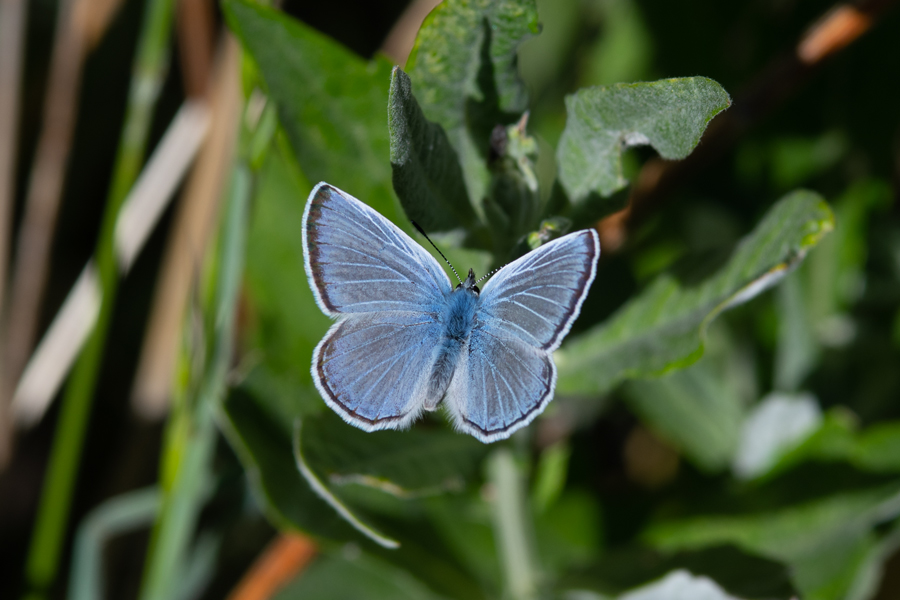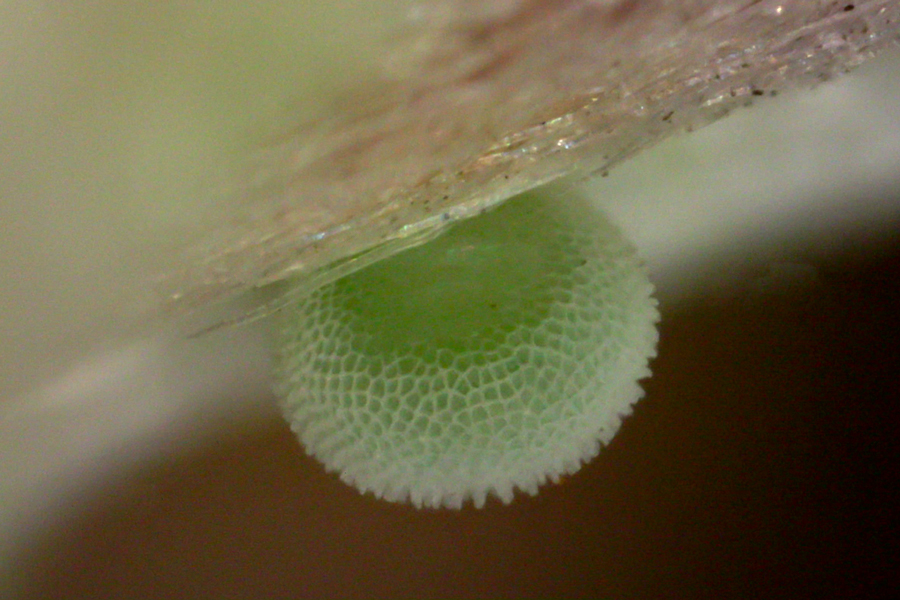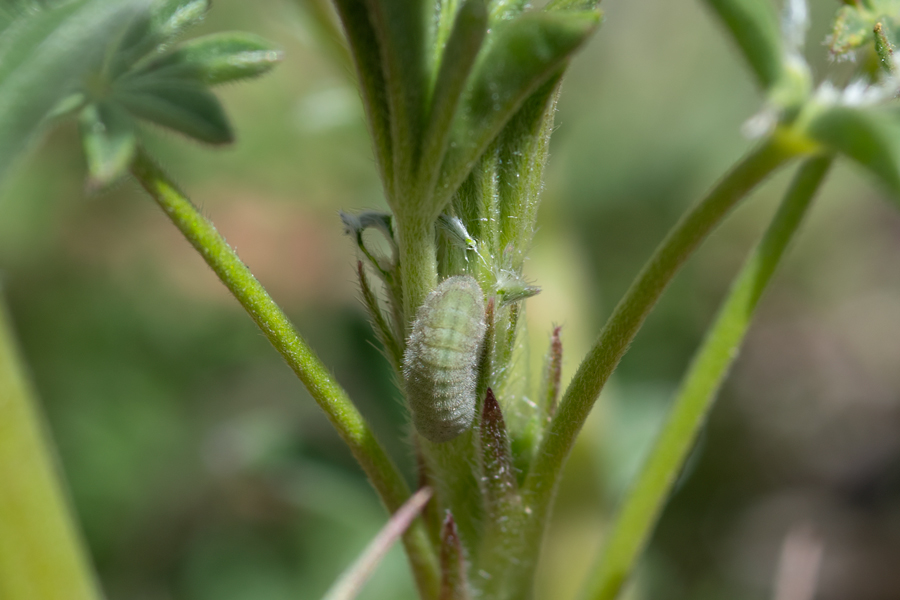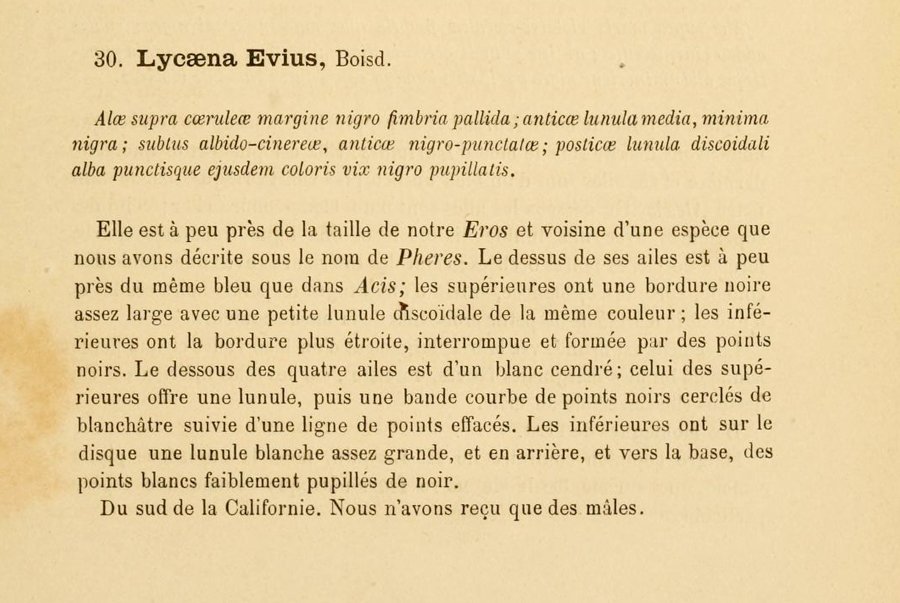Icaricia icarioides evius
'Evius' Boisduval's Blue
Boisduval's blues in the San Gabriel and San Bernardino mountains (and most other places to the south) are subspecies evius. Males are a beautiful pale blue with silvery veins and black borders, while females vary, with blue at the base often blending into tan coloration and with wide borders on the forewings and a row of small orange markings along the bottom of the hind wing. Both sexes may be found in patches of lupines, the larval food plant. There is one brood, flying from approximately mid-May into mid-July most years for higher elevation mountain colonies (earlier at lower elevations). Early instar larvae feed after the flights and then overwinter at the base of the plant, sometimes tended by ants in their burrows. Before flights the next spring, the larvae finish developing and pupate.
The naming of this butterfly is credited to Boisduval, who had received a few males from Pierre Lorquin, who had been in California during the gold rush (see the brief description below). In an article in the Systematics book (p.29), Emmel, Emmel and Mattoon restricted the type locality to La Cresenta in Los Angeles based on the likelihood that Lorquin collected his specimens there in the 1850s.
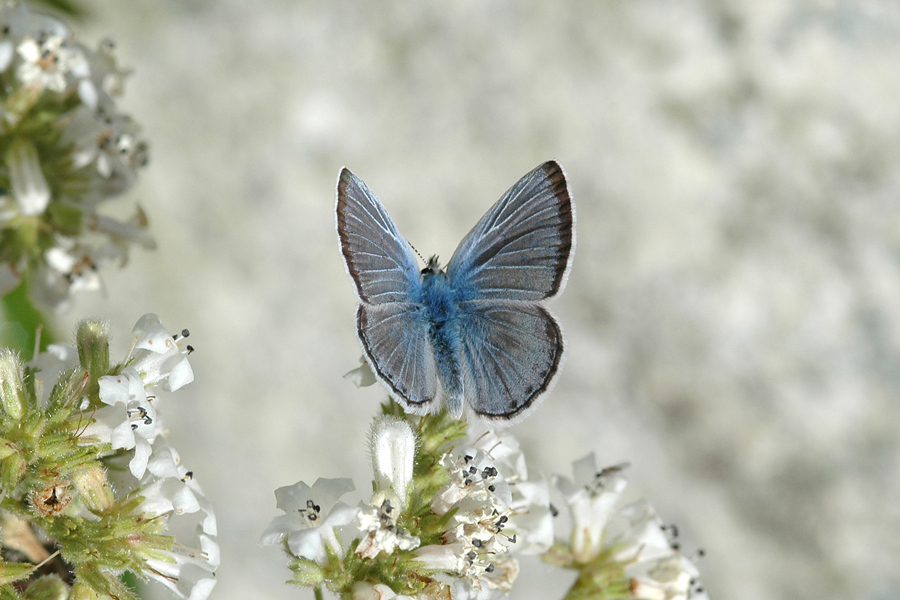
Male Icaricia icarioides evius, 'Evius' Boisduval's blue, in Icehouse Canyon, San Gabriels. June 19, 2007.
A female Boisduval's blue on host lupines near Heap's Peak Arboretum near Lake Arrowhead. June 15, 2020.
A female 'Evius' Boisduval's blue at Siberia Creek Trail near Big Bear. June 27, 2006.
To show more variety, another female Boisduval's blue, Glendora Ridge Road, San Gabriels, May 17, 2007.
Ventral of a female Icaricia icarioides evius at Siberia Creek Trail on July 19, 2005.
Another male
Icaricia icarioides evius. This one was also part of a colony at a big turnout along Rim of the World Drive near Heaps Peak Arboretum; there is a female a few photos above from the same day. Note the lack of a small black bar in the middle of the forewing, which in some situations helps distinguish this male blue from males of
Icaricia saepiolus hilda that may be in the general area.
I was in a nice patch of Lupinus excubitus at Lake Hemet on May 12th, 2024, among many blues of several species. Females of Boisduval's blue would crawl among the lower leaves and oviposit on the stems of the leaves. This egg is magnified 220x.
This caterpillar is one of two I found feeding on the shoots of leaves coming up on the fairly new lupines. These late-instars are found before flights, when they come out of diapause and begin feeding again. This is at a turnout near Heap's Peak Arboretum, on April 7, 2022. I'm going to wait to identify the lupine, as I've learned that these are easily misidentified and veteran botanists may even have trouble determining the species. It helps to be able to see the flowers, particularly the keel and the back of the banner, but this early there were only leaves.
Boisduval's description of males received from Lorquin. From his 1869 article "Lépidoptéres de la Californie" in the journal Annales de la Société Entomologique de Belgique, Vol.12, p.49.
©Dennis Walker

